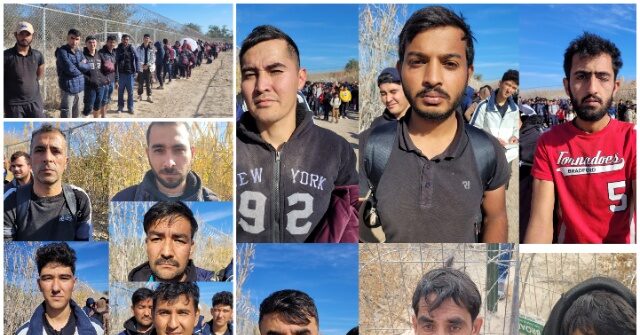On Sunday, the Texas Department of Public Safety (DPS) made a significant interception near Eagle Pass, Texas, apprehending a group of 176 migrants shortly after they crossed the Rio Grande from Mexico. This group included a diverse mix of individuals, such as single adults, family units, and unaccompanied minors, representing several countries including Afghanistan, El Salvador, Ecuador, Cuba, Colombia, Brazil, and Venezuela. Among the 176 migrants, 11 were identified as Special Interest Aliens (SIAs) from Afghanistan, raising concerns regarding potential national security threats. Lieutenant Chris Olivarez of the DPS indicated that 85 individuals from the group were prosecuted for criminal trespassing under Texas state law, while family units and unaccompanied children were processed by Border Patrol without facing criminal charges.
The incident at Eagle Pass is part of a broader trend in the area, where Special Interest Aliens now appear to be crossing the border more frequently. Just days before the Sunday interception, Border Patrol agents had apprehended another group of 289 migrants, which included seven SIAs from Iran. These developments suggest a significant increase in the number of migrants crossing into Texas who may have potential ties to national security threats. The influx of individuals from countries like Afghanistan and Iran, especially in light of violence and instability in their home regions, highlights the complexities of migration patterns at the southern border.
According to a 2019 Department of Homeland Security (DHS) fact sheet, the designation of Special Interest Alien refers to non-U.S. persons whose travel patterns may indicate a potential risk to national security. While not all SIAs represent a direct threat, their movements often warrant closer scrutiny due to a possible nexus to terrorism or other criminal activities. This has led to a necessity for heightened screening and investigations into individuals who are categorized as SIAs based on their travel history and origin points. The operational definitions and implications of being labeled as an SIA underscore the nuances involved in assessing border security and migration issues.
The recent apprehensions are indicative of the ongoing efforts under Operation Lone Star, a border security initiative launched by Texas Governor Greg Abbott in March 2021. This operation involves the deployment of Texas Highway Patrol troopers along with members of the Texas Army National Guard to enhance security along the Texas-Mexico border. Since its inception, Operation Lone Star has resulted in over 518,300 migrant apprehensions, 46,000 criminal arrests, and the seizure of over 521 million lethal doses of fentanyl, showcasing a high level of illegal activity and border crossings in the region.
The nature of these apprehensions raises concerns not only about border security but also about the implications for public safety and immigration policy. As more migrants from special interest countries seek entry into the U.S., law enforcement and border agencies face the challenge of balancing humanitarian concerns with national security risks. The presence of unaccompanied minors and family units in these mixed groups adds another layer of complexity, as their treatment under the law differs from that of single adult migrants, complicating efforts to manage growing numbers at the border.
In summary, the events near Eagle Pass shed light on the evolving landscape of migration at the southern U.S. border. With the apprehension of migrants from diverse backgrounds and the rising prevalence of Special Interest Aliens, security agencies are adapting their strategies to respond to both humanitarian challenges and potential national threats. The implications of these migrant patterns will likely continue to influence discussions surrounding immigration policy and border security, especially as state and federal responses evolve in the wake of such developments. The data gathered through initiatives like Operation Lone Star is crucial in shaping future strategies and understanding the dynamics of migration and its impact on both border communities and national security.

